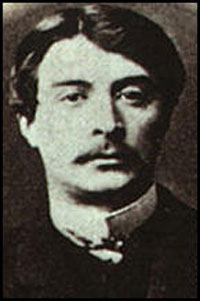JAMES JACQUES JOSEPH TISSOT PAINTINGS FOR SALE & BIOGRAPHY
JAMES JACQUES JOSEPH TISSOT
French, 1836-1902
BIOGRAPH
James Jacques Joseph Tissot 'studied in Paris under Louis Lamotte, Hippolyte Flandrin and Ingres. His interest for all things English profoundly affected his life and his career as an artist. Upon his Salon debut in 1859, for example, he anglicised his name to James. In 1865, he illustrated Ballads and Songs of Brittany and, from 1869, contributed caricatures under the pen-name of Coldé to the English-language periodicals Vanity Fair and Century. Tissot lived in London for the first time as of 1869 and started to make a name for himself as a portrait artist. He returned to France to play an active part in the defence of Paris during the Franco-Prussian War of 1870-1871 and is also thought to have participated in the Paris Commune. The latter activity doubtlessly precipitated his return to England where he was lodged by the then editor of Vanity Fair T.G. Bowles, who had previously employed him and who commissioned him in 1871 to illustrate an eyewitness Account of the Defence of Paris. Tissot settled in St. John's Wood, then in the outskirts of London, where he acquired a beautiful mansion and gardens which he often used as for his work. By this time, Tissot had acquired the airs and graces typical of a dandy. Bowles introduced him to London society, where he met Whistler and the his brother-in-law, the physician and engraver Sir Francis Seymour Haden. He also became acquainted with Ruskin from whom he received encouragement. In 1876, Tissot met Kathleen Newton, a free spirit who became his mistress and his exclusive model until her death in 1882.
In the course of the 1870s, the Impressionists with Degas, Tissot's friend and fellow-pupil, to the fore, proposed to Tissot to exhibit his work alongside their own. Apparently Tissot did not consider his work compatible with that of the Impressionists as a whole, and he declined the offer. However his Henley Regatta, painted around 1877, demonstrates his familiarity with Impressionist technique.
In 1880, Tissot became member of the Royal Society of Painters and Etchers. In 1882, he illustrated the Goncourt brothers' novel Renée Mauperin and, in November of that year, only days after Kathleen Newton's death, Tissot returned to Paris. There, he enjoyed a brief liaison with a circus performer and became engaged to the daughter of the painter Louis Riesener (whom he never married). By this time, Tissot was involved in spiritualism and magnetism, participating regularly in questionable séances in the vain hope of re-establishing contact with Kathleen. He eventually had a vision in the church of St-Sulpice in Paris; this prompted him to renounce formally all things secular and to devote his time to illustrating episodes drawn from Holy Scripture. In order to gather material he travelled to Palestine in 1886 and again in 1889. The three hundred and fifty or so watercolour drawings he brought back from Palestine were reproduced in two volumes published in Paris by Lemercier and Marne and in London by Sampson Low. The sale of royalty rights earned Tissot a vast sum. The volumes, commonly known as the James Tissot Bible, are formally entitled Life of Our Lord Jesus Christ. Following publication, Tissot returned to Palestine in 1896 to research companion volumes to illustrate episodes from the Old Testament. He returned to France, specifically to the Abbey of Buillon in the Doubs region, in order to complete the scheduled illustrations but died before he could do so.
James Tissot first exhibited at the Paris Salon of 1859 with a painting entitled Walk in the Snowtogether with preliminary drawings for stained glass windows for a church in Nantes. His entry to the 1861 Salon, a painting entitled Faust's Meeting with Marguerite, was widely acclaimed and subsequently acquired by the French state. In 1864, he was invited to exhibit at London's Royal Academy and at the Society of British Artists. Then, in 1882, the Dudley Gallery exhibited paintings and etchings by him on the theme of the Prodigal Son in Modern Times. After returning to Paris in 1882, he was accorded a solo exhibition at the Palais de l'Industrie. In 1885, he exhibited at the Sedelmeyer Gallery, showing the fifteen large paintings which formed his Parisian Woman cycle; this exhibition transferred the following year to the Tooth Gallery. In 1889, a major collection of his engravings featured in the Exposition Universelle in Paris. This was followed by exhibitions of his 350 New Testament illustrations in both Paris (1895) and London (1896). Following his death in 1902, Tissot's work was largely ignored for many years. In 1985, however, the Musée du Petit Palais in Paris mounted a remarkable exhibition devoted to his work.'
(Benezit, Dictionary of Artists, Gründ, 2006)
Mark Murray Fine Paintings is a New York gallery specializing in buying and selling 19th century and early 20th century artwork.
JAMES JACQUES JOSEPH TISSOT
Paintings for sale
Currently there are no available James Jacques Joseph Tissot paintings for sale at the Mark Murray Gallery.
Please contact us if you are interested in selling your James Jacques Joseph Tissot paintings or other artwork from the 19th century and early 20th century.
James Jacques Joseph Tissot
Paintings Previously Sold
JAMES JACQUES JOSEPH TISSOT
Portrait of Marie-Héloise Jeanne Ferré May
Pastel on linen
58 x 40 inches (147.3 x 101.6cm)
SOLD


